| Skip Navigation Links | |
| Exit Print View | |

|
Sun Server X2-8 Product Documentation Sun Server X2-8 (formerly Sun Fire X4800 M2) Documentation Library |
| Skip Navigation Links | |
| Exit Print View | |

|
Sun Server X2-8 Product Documentation Sun Server X2-8 (formerly Sun Fire X4800 M2) Documentation Library |
Windows Server OS Installation Planning
Windows Server Installation Methods
Preparing For Windows OS Installation
Supported Windows Operating Systems
Windows Server Installation Considerations
Selecting a Windows OS Media Delivery Method
Oracle Hardware Installation Assistant (OHIA)
How to Download Server Software
How to Set Up an Oracle ILOM Remote Console
How to Install Windows Server 2008 R2
How to Install Windows Server 2012
How to Install Windows Server 2008 Using PXE
How to Install Windows Server 2012 Using PXE
Updating Critical Drivers and Installing Supplemental Software
Installing Critical Device Drivers
How to Install Server-Specific Device Drivers
Installing Supplemental Software
How to Install the Supplemental Software
Managing RAID Using the MegaRAID Storage Manager
Configuring Support for the Trusted Platform Module
Incorporating Windows Server 2008 Device Drivers Into WIM Images for WDS
Location of Device Drivers on Tools and Drivers DVD
Device Drivers to Incorporate Into WIM Images
Prerequisites and Task Overview for the Device Driver WIM Images
Incorporating Drivers Into the WIM Image
How to Create an ImageUnattend.xml Setup Script
Map ImageUnattend.xml Setup Script to Windows Server 2008 Install Image
Downloading the ISO Image for the Tools and Drivers DVD
Identifying Network Interfaces in Windows
How to Determine the Server's Active Network Data Ports
How to Confirm Physical Port MAC Addresses and Map Them to Windows Device Names
This procedure creates a virtual disk where you will install the OS. It uses Manual Configuration to create a virtual drive using only one hard drive.
This is only one of many possible RAID configurations. To install a different RAID configuration, refer to the SGX-SAS6-R-REM-Z: Software User's Guide, available at: http://www.lsi.com/sep/Pages/oracle/sg_x_sas6-r-rem-z.aspx
Before You Begin
If you are using a Windows Remote installation, configure it as described in Configuring a Remote Console before starting.
The Launch Redirection screen appears.
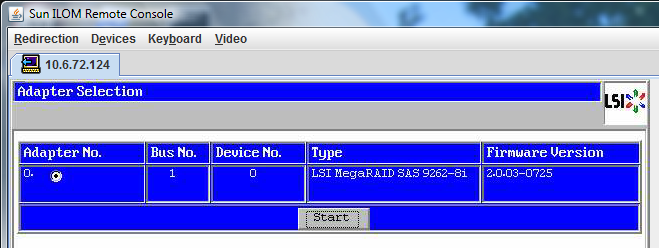
The MegaRaid BIOS Config Utility Virtual Configuration screen appears.
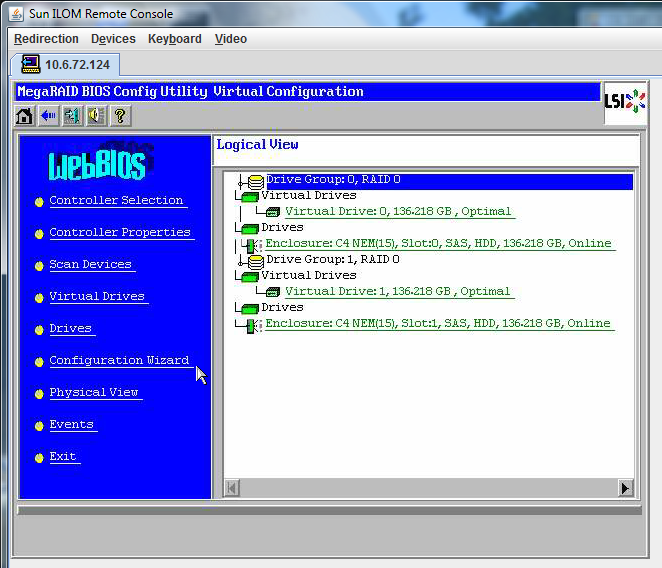
The MegaRaid BIOS Config Utility Virtual Configuration Wizard screen appears.
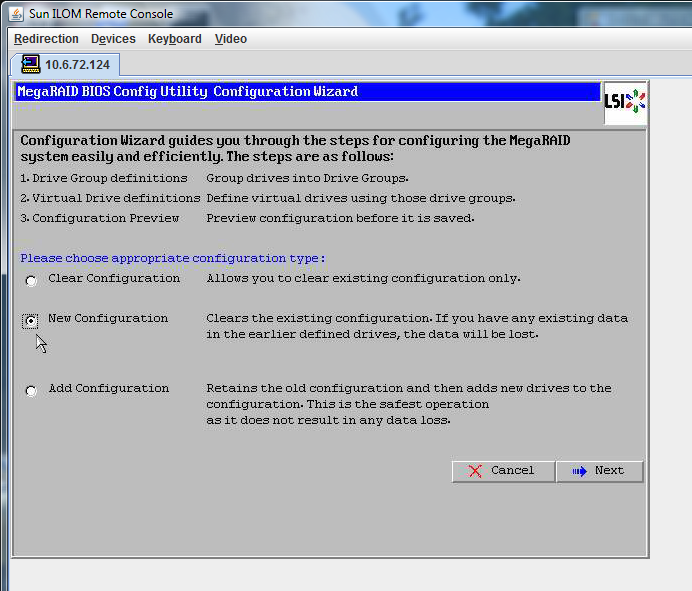
The Select Configuration window appears.

Automatic Configuration creates a single virtual drive that combines all the hard drives on your system into a single virtual drive with all data striped across all the drives.
The rest of this procedure uses Manual Configuration to create a virtual drive using only one hard drive. This is only one of many RAID options. To configure different RAID options, refer to SGX-SAS6-R-REM-Z: Software User's Guide available at http://www.lsi.com/sep/Pages/oracle/sg_x_sas6-r-rem-z.aspx.
.

The MegaRAID BIOS Config Utility Config Wizard – Drive Group Definition screen appears, showing the drives in the system and the drive groups.
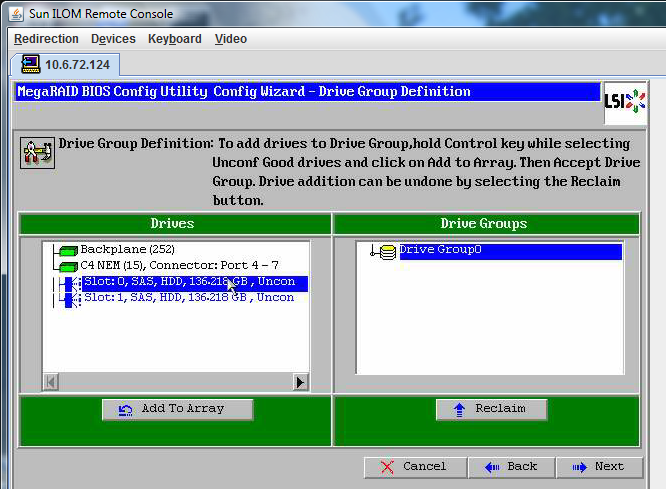
You can now view Drive Group 0.
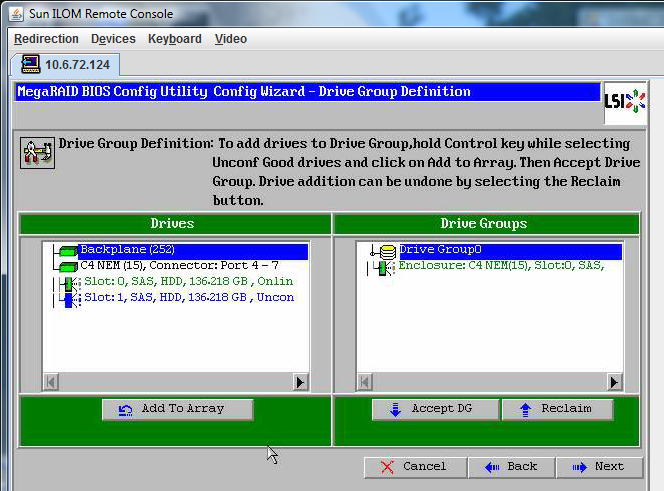
Note - You can undo the drive group selection by clicking the Reclaim button.
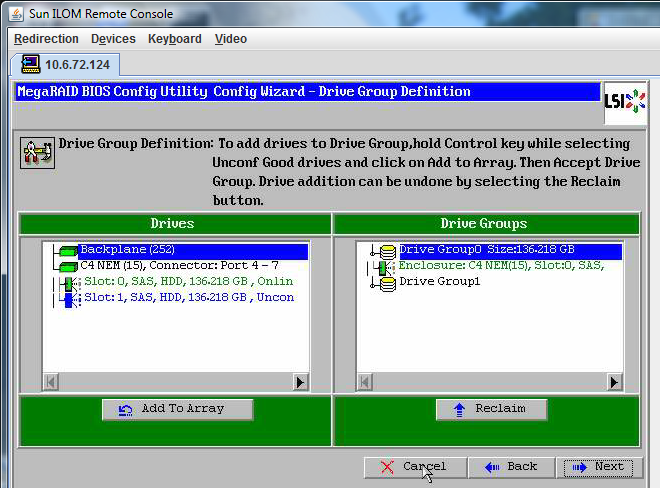
The drive group appears in the Span Definition window.

The drive group appears in the span.
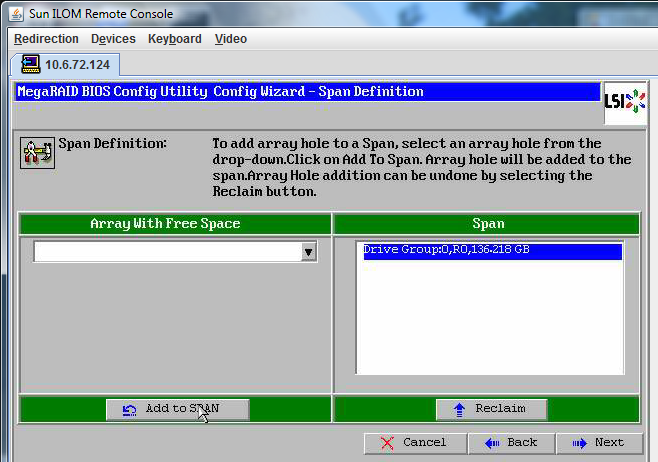
The Virtual Drive Definition screen appears.
For more information about configuring RAID, refer to your server's disk management documentation.
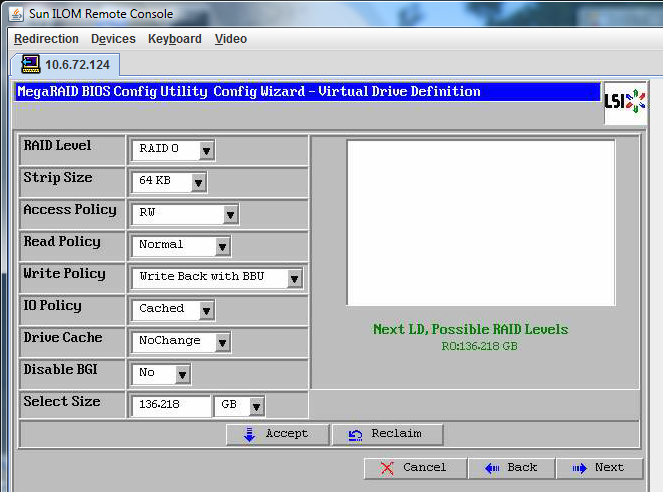
The system prompts you to confirm Write Back with BBU mode.
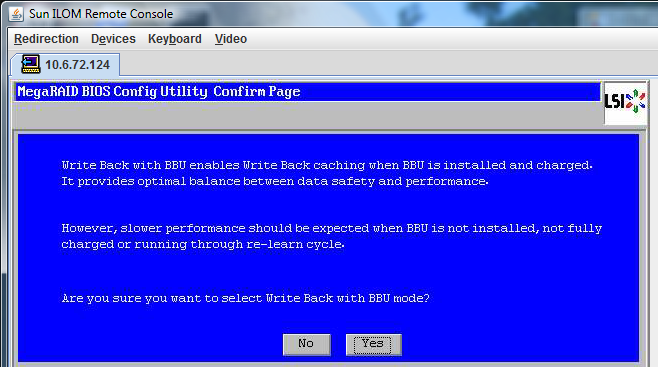
The Config Wizard —> Virtual Drive Definition window appears.
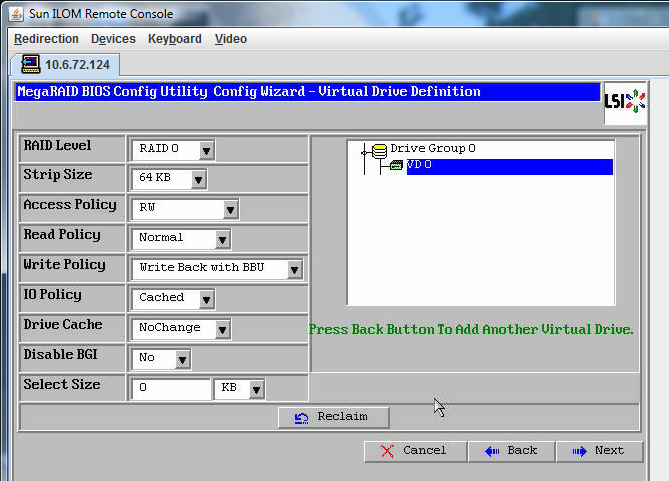
The Preview screen appears.
The example graphic shows a single virtual drive using the Manual Configuration option, then click Accept.
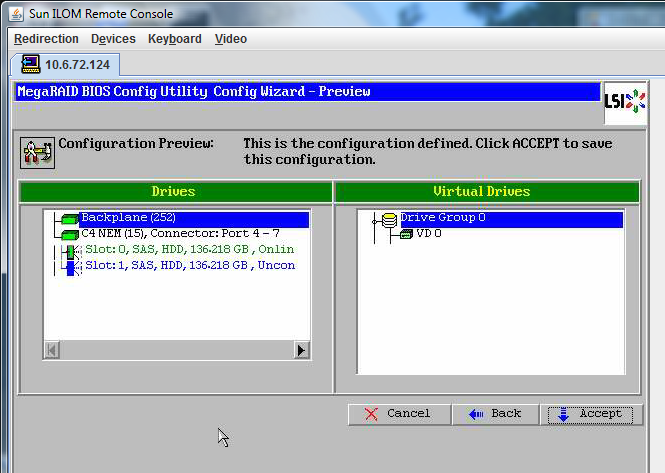
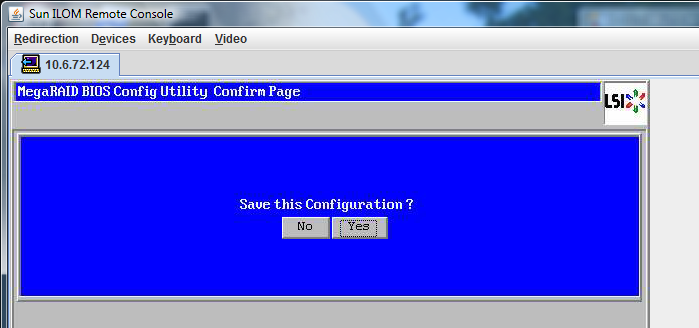
The prompt appears: All data on Virtual Drives will be lost. Want to Initialize?
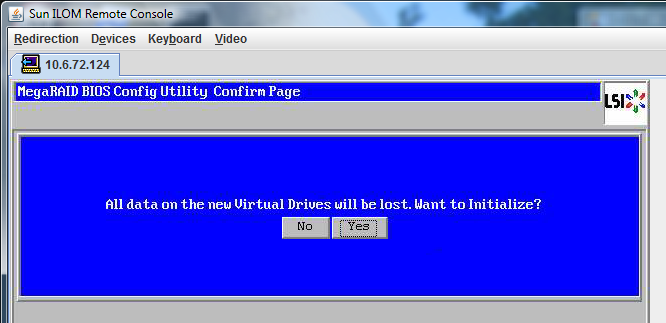
The Virtual Drives list appears.
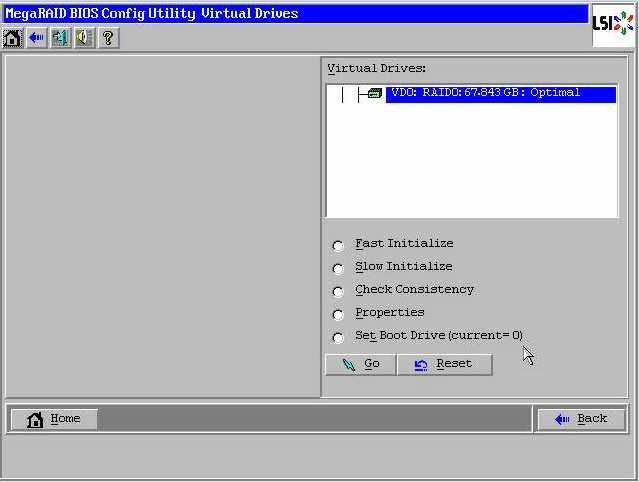
The MegaRaid BIOS Config Utility Virtual Configuration screen appears.

The system reboots.
See Also